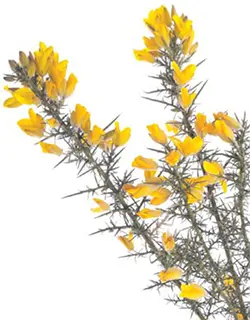
A Thorny Plant with Fragrant Blooms and a Rich Background
Gorse, a member of the Ulex genus, encompasses around twenty species of thorny evergreen shrubs. Originating from Europe, these plants are recognized for their fragrant yellow flowers and distinctive black pods. Gorse has a notable history, both as a valued plant in herbal traditions and for its environmental impact.
The Dual Nature: From Europe to New Zealand
Introduced to New Zealand in the 1830s, Gorse quickly became an ecological challenge. It thrived in cleared lands and farmlands, earning a reputation as an invasive weed. The plant’s aggressive spread led to significant efforts and financial investments to control its growth. It’s estimated that Gorse covers a substantial portion of New Zealand’s land, highlighting its resilient and adaptive nature.
Gorse in Herbal Practice: A Beacon of Hope
In the realm of herbal remedies, Gorse flower essence is cherished for its ability to illuminate the path out of despair. It is particularly recommended for those experiencing deep hopelessness, helping restore faith and encouraging progress. The essence is seen as a source of light for those who feel overwhelmed by uncertainty, offering a renewed sense of possibility and forward movement.
Gorse stands as a symbol of resilience and adaptability. Its journey from a valued plant in Europe to an invasive species in New Zealand, coupled with its significant role in herbal therapy, paints a picture of a plant with a complex legacy. This legacy is not just ecological but also deeply rooted in human emotion and healing.
